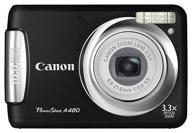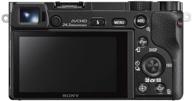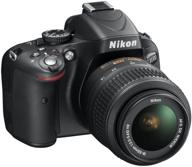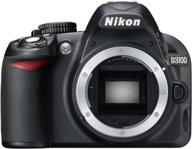
Review on International Version Canon EOS 60D 18 MP CMOS Digital SLR Camera with EF-S 18-55mm f/3.5-5.6 IS Lens Kit by Kero Sama ᠌

Wonderful quality, one hundred percent satisfied!
That brings us to the end. In summing up, I can state that this camera is in no way suited for shooting reportage and that you should go elsewhere. Unless the reporting is taking place in perfect conditions with excellent illumination. Shaking roller skaters or skateboarders when they are in motion at 100–500 frames per second will not be successful. It is also not his strong suit to carry out extreme shooting in nightclubs and at concerts (although if you wish, you can achieve a more or less decent result). It is more suited for shooting in a relaxed studio setting, on the street, or creatively. When paired with the appropriate optics, the Canon 60D is capable of capturing breathtaking images in a variety of settings, including landscapes, portraits of children and adults, outstanding macro shots, and more. You will be able to completely grasp photographic equipment and become a part of the art if there are a lot of fine settings, but there are no frills. And the image quality is satisfactory even for printing on an A2 sheet. Well, in studios, with professional flashes, and with high-quality optics (even if not L-class, but at least 85 1.8 USM), the pictures will turn out to be no worse than professional ones, and any complaints about the pictures can be made only to the curvature of your hands and your creative imagination. In other words, the pictures will turn out exactly the same as professional ones. I also have something to contribute, and despite the fact that it sounds ridiculous, it is, in fact, reasonable to trouble oneself with optics that cost more than the camera itself. Pictures taken with high-aperture fixed or L-class zooms are of the same excellent quality as those taken with professional cameras. I wholeheartedly endorse it for anybody who are interested in gaining an understanding of the art of photography as well as how to work with photographic equipment. Using this camera, it is not only conceivable but also quite possible for you to build a strong portfolio for yourself, put some of your creative ideas into action, and even earn some additional income from your photography. If you want to generate money off of it, though, you should take into consideration the boundaries of what it is capable of doing.
- Although I have nothing but positive feelings about the product, in the sake of making it simpler for you to make a decision, I will discuss both its advantages and disadvantages. Now, onto the positives: 1) A well-made and sturdy construction. There are no gaps or backlashes. Everything is put together in a way that is both clear and of extremely high quality. 2) Aluminum chassis. Aluminum is different. Read up on the properties of the D16T aluminum alloy if you're of the opinion that this is anything to be concerned about. 3) The simplicity of administration. Extremely handy navigation pad (a scroll wheel that also functions as a joystick). 4) Monochrome screen. Someone will get the impression that this is unneeded pampering, but you will not believe how much faster the task will get done as a result of doing this. When I switched from a camera that had this screen to the 600D, I noticed a significant increase in the amount of time it took to make adjustments to the shooting parameters. And while though the touch screen on the 650D is supposed to help speed up the setup process and make it easier for users, it still performs worse than direct control displayed on a monochrome screen. 5) The quality of the photographs taken in the studio. Amazing results can be achieved in photography by using low ISO settings (up to 800 units). A full-length portrait is able to capture every minute detail, down to the texture of the subject's skin and the individual hairs on their head. But, while utilizing lenses that are not made from whales. 6) The conservation of energy The camera has a low demand on the battery and is among the best in its class. When taking into account the use of synchronizers, a fully charged battery should be able to support more than one thousand photographs. One charge is sufficient for around 600-700 shots while using the built-in flash. 7) An autofocus that is quite dogged. If the adjustments are made correctly, the autofocus on USM lenses is not slower than that of the 5dm3, provided that everything is in order. 8) Screen with a rotary motion Pampering, but also assisted in a number of instances when it was required to film from a lower angle (from the floor). But, in order to accomplish this, I was forced to switch to the LV shooting mode, which is extremely slow and makes it impossible to shoot a report using it. Only appropriate for filming that takes place in a relaxed setting. 9) The built-in flash has the capability to wirelessly trigger flashes from the SpeedLite series. 10) A maximum shutter speed of 1/8000 of a second. comparable to high-end professional cameras.
- 1) The matrix has a lot of noise. Once you raise the sensitivity above 800, the noise becomes intolerable. Because of this, taking pictures during the twilight hours is nearly impossible if the camera does not have fast optics or flashes. The only solution is to lengthen the amount of time that the shutter is open, but this means that reportage photography is no longer an option. 2) A memory buffer for bursts When the rate of firing is high enough, the buffer will be full very quickly. When shooting in RAW, the memory can only hold a maximum of seven frames, and the shooting speed is severely reduced. Even the most expensive and quickest SD cards are not capable of saving anything. 3) The automatic white balance feature will make educated approximations in around 70 percent of all situations. It is recommended that the preset options for the balance settings not be used at all because they have never produced the effect that was sought. As a consequence of this, we will either have to manually adjust the white balance such that it is placed on a gray mark each time, or we will have to trust the automation while still carefully examining the film.
New products
Comments (0)
Top products in 📷 Digital Cameras

Canon PowerShot A480 camera, black

108 Review

Revamped Sony Alpha a6000 Mirrorless Digital Camera: 24.3MP SLR Camera with 3.0-Inch LCD and Power Zoom Lens

103 Review

Nikon D5100 Digital SLR Camera with 18-55mm VR Lens - High Resolution 16.2MP

172 Review

Nikon D3100 DSLR Camera Body (Kit Box) - No Lens Included, International Version with No Warranty

298 Review





